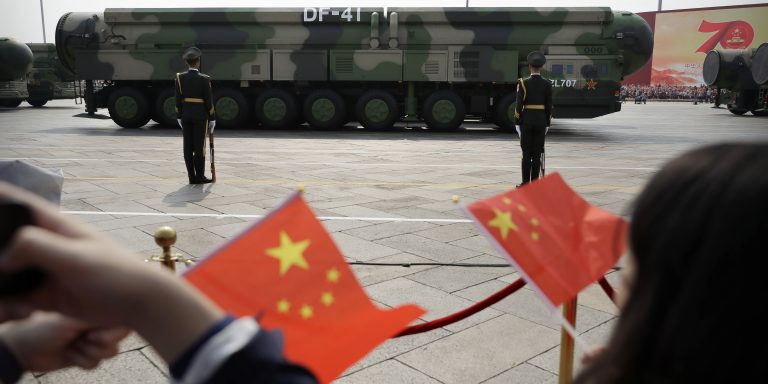
Last week, the U.S. Department of Defense released the 2022 China Military Power Report (CMPR), a Congressionally mandated report that assesses the military and security developments and directions of the People’s Republic of China (PRC). The report describes China as “the most consequential and systemic challenge to U.S. national security and the free and open international system,” an assessment also put forth in the October 2022 Biden-Harris National Security Strategy. The report details the global ambitions of the ruling Chinese Communist Party (CCP) and how Beijing has frequently employed the People’s Liberation Army (PLA) to further economic, security, and military objectives. The 197-page report covers a range of critical areas and insight into the challenge the PRC poses to not only the United States, but also allies and the future stability in the Indo-Pacific, indicating that the trendlines that were highlighted in previous CMPR reports continue to be pursued by Beijing. These include increases in key capabilities such as nuclear warhead stockpiles, ISR satellite fleet, and considerations for overseas PLA military logistics facilities.
The report notes that China’s nuclear expansion was likely accelerated in 2021, and that by 2035—the timeline for military modernization of the PRC’s armed forces—they could stockpile between 1,000 to 1,500 nuclear warheads (from around 400 today). While these numbers may make for click-bait statistics to showcase the existential threat posed by the PRC to the United States, it is important to place these numbers in context and adopt a comparative analysis. Today, the United States possesses 5,000 nuclear warheads (four to five times as many that China may seek to acquire by 2035), leaving its deterrence capabilities intact. Another area of concern is the geographical expansion of the PLA’s long-range precision strike capability on U.S. bases in the Pacific, which now includes Guam. Coupled with economic, security, and diplomatic developments in the Pacific, such as the China-Solomon Island Pact, that indicates a more substantial PLA reach in the South Pacific in the future (both the Solomon Islands and the PRC have denied any plans for a Chinese military base in the Island nation). The 2022 CMPR report noted that “The PLA is most interested in military access along the sea lines of communication (SLOCs) from China to the Strait of Hormuz, Africa, and the Pacific Islands.”
The report also noted that the PRC “intensified diplomatic, economic, political, and military pressure against Taiwan in 2021.” US-China relations have become increasingly tense in 2022 over the Taiwan Strait—especially following House of Representatives Speaker Nancy Pelosi’s visit to the island in August of this year. The 2022 CMPR outlines several ways in which China could seek forceful unification with Taiwan, including blockades, asymmetrical campaigns, and a full-scale amphibious invasion. The report notes that “the PRC publicly advocates for peaceful unification with Taiwan” but that “the circumstances under which the PRC has historically indicated it would consider using force remain ambiguous and have evolved over time.” One key aspect of the CMPR deserves closer attention is the PRC’s continued investment in space and counter-space capabilities, with implications for Taiwan. This is seen as a key capability by the PLA to “blind and deafen the enemy”—which can essentially be used to deter or deny any other state that may seek to come to Taiwan’s aid.
The possibility of China seeking a forceful unification with Taiwan in the coming years is certainly top of mind for policymakers in Washington D.C. However, it is important that the 2022 CMPR not be quoted out of context to overhype the threat of military conflict in the Taiwan Strait. A sober analysis of the PRC’s ambitions and military capabilities can inform effective policy vis-à-vis Beijing and avoid an arms race. However, the 2022 CMPR must be considered against the background of wider U.S. geostrategic capabilities and priorities as outlined in the 2022 National Security Strategy and the February 2022 Indo-Pacific strategy. A consistent thread throughout the strategies is the readiness of the United States to compete responsibly with the PRC when it must, cooperate where it can, and not adopt a reactive posture to Beijing’s policies. While it is important to note developments in the PRC, a comparative analysis demonstrates the U.S. retains its deterrence capabilities.
The breakdown in diplomacy between Beijing and Washington during the early fall of 2022 was worrisome. Still, the Biden-Xi meeting in Indonesia in mid-November, followed by the U.S. Secretary of Defense Lloyd Austin’s meeting with his counterpart in late November, and the planned visit by U.S. Secretary of State Antony Blinken to China in January 2023 indicate that diplomacy is back on the menu. This bodes well for maintaining an open line of communication and avoiding miscalculations, including in the Taiwan Strait.
No comments:
Post a Comment